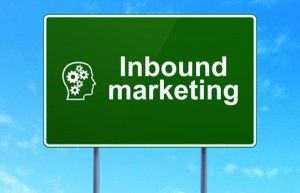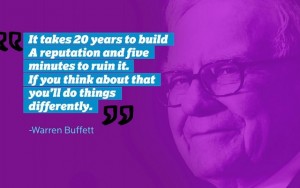Understanding human behavior is more important in marketing than ever before. As marketing moves to a one-on-one model in an always-connected world, content consumption, buying, and selling are increasingly more seamless with life. Executing even the most technically complex marketing strategy has roots in understanding how humans behave.
While it’s essential to consider your target buyers’ behavior and engagement patterns when designing an inbound marketing strategy, what’s crystal clear is that most people primarily turn to online search to find information. And, searches are initiated by one thing: the need to solve a problem.
That’s why search engine optimization (SEO) must be the framework of any marketing strategy.
As an inbound marketing manager with SPROUT Content, I spend my time designing marketing strategies for technology companies, and then bringing those strategies to life with a team of gifted writers, designers, and developers. SEO tactics lay the foundation of all strategic and optimization efforts.

For example, one successful client in Sprout Content’s portfolio provides machine learning or artificial intelligence (AI) applications to help customer support teams manage the most tedious and repetitive support ticket tasks. Re-engineered SEO efforts, within the context of their broader inbound marketing strategy, resulted in a 45% increase in organic web traffic over the last five months, as compared to the five months prior.
The following tactics contributed to that success and are a part of SPROUT Content’s signature inbound marketing strategy creation and gap analysis process. These industry-agnostic exercises fuel organic growth by helping define a clear, measurable SEO strategy.
Develop Personas
Only by fully understanding the needs, challenges, and problems of your target buyer(s) can your team truly write targeted content – including technical content for search engines such as page titles and metadata – that helps your target buyer(s) find your solution. Developing buyer personas begins with identifying every contributing decision maker in the path to purchase. If that list is long, next narrow down which decision makers most contribute to the bottom line. Through a series of target buyer interviews, followed by online research, key search terms emerge. Beyond just keywords, long-tail and natural language search phrases set the foundation of SEO. Using analysis around ranking difficulty, search volume, and relevance, top targets become clear.
Personas drive client SEO strategy
Turning to a client example, this tech company providing AI customer support applications had variable traffic sources or personas visiting their site. It was important to identify target buyers outside of sources of site traffic. For instance, just because this client received significant traffic from data scientists on their site, it wasn’t important to include SEO terms that attract this peripheral visitor, because they have little purchasing power. Instead, our team walked through the buyer’s journey with their sales team, and deconstructed this process to fully understand the primary and contributing decision-makers. By identifying pain points and the associated search terms their target buyer(s) used when trying to solve their greatest support support problems, the top SEO targets became clear.
This deep understanding of a target market’s challenges, along the sales cycle, and the information they seek as they evaluate solutions, helps reverse engineer the most impactful SEO phrases from both a technical and on-page perspective.
Competitive analysis
Technology is changing at an unprecedented rate and industry saturation continues to inspire companies to innovate faster than their competition. Especially in tech marketing, it’s important to recognize that many potential customers won’t know which solution they need and therefore, might not even be searching for your offering. This truth helps identify additional SEO opportunities. For that reason, it’s important to take a step back, put on your target persona’s hat, and include natural language search terms your market buyer might use to research solutions to solve their problem.
Looking again to our machine learning client, their target market will most likely not consider specific AI solutions, at least in their initial research, but will explore options to add to their tech stack to improve metrics like Customer Satisfaction Scores (CSAT) or solve the problem of customer support agent turnover. So, appropriate terms to include in an SEO strategy might be:
- Customer support ticket management tools
- Customer service automation tools
- Customer ticket organization
- Reduce ticket agent churn
- Reduce ticket volume
- Tools to improve CSAT
- How do I increase CSAT?
- How do we better manage customer service ticket volume?
In addition, indirect competitors are a valuable source of SEO terms. Beyond direct competitors offering machine learning customer support tools it’s important to examine competing technological solutions including:
- Customer support staffing companies
- Chatbots for customer service
- Keyword-based automated replies
- Intelligent knowledge base
- Crowd-sourced customer support
Because your target market may be more familiar with the solutions above, they might be searching for those terms, without knowing or considering your solution. Creating top-funnel optimized content with long-tail keywords scoops up this broader target market by leveraging search terms used by your competitors. By educating this peripheral demographic on alternative solutions, you become a trusted resource for content that solves their greatest problems.
Implement your SEO strategy
The implementation process includes selecting keyword targets, mapping them to webpages, and updating both technical and on-page search terms. Learn more about our signature process from Dechay Watts, Sprout Co-Founder, in her blog post: 3 Easy SEO Tactics to Do Right Now.
Employ the scientific method
Because I believe that inbound marketing is more of a science than an art, testing and refining a strategy defines SEO success.
Perhaps you remember from grade school that the scientific method includes creating a hypothesis, conducting an experiment, observing and analyzing, compiling data, and drawing conclusions. A successful inbound marketing campaign necessitates the same formula. Following the implementation of both technical and on-page SEO, a company essentially conducts an experiment.
According to an article in Forbes, it takes between six and twelve months for SEO to start working. Therefore, after several months of executing an SEO strategy, analyze which keyword phrases are driving traffic that converts by examining metrics like ebook downloads, demo form completion, or new customer acquisition. Too often, marketers inaccurately measure SEO success by tracking improvements in keyword ranking, especially those terms showing up on the highly coveted page one. Josh Steimle, founder of the international marketing firm MWI, says it best when he reminds us all: “That’s why you should only hire SEO firms or SEO professionals who focus on outcomes, rather than outputs.” While it might be easiest to define SEO success by keyword ranking improvement, the metric is useless unless it feeds the bottom line.
SEO optimization is especially critical in tech marketing and redefining an SEO strategy, driven by data analysis, should occur annually. Rapid innovation creates a tech marketing environment in which keyword phrases and contributing buyers quickly evolve. And, time is a constant variable that outdates SEO efforts soon after implementation, especially for revolutionary tech companies. Monitoring the engagement and human behavior patterns of your target market – including how they talk about and search for solutions to their professional problems – will give you an edge over the competition. Target buyer personas are, at their essence, human beings with problems, and tapping into their psychology will continue to help optimize your SEO strategy.
Digital & Social Articles on Business 2 Community(111)






